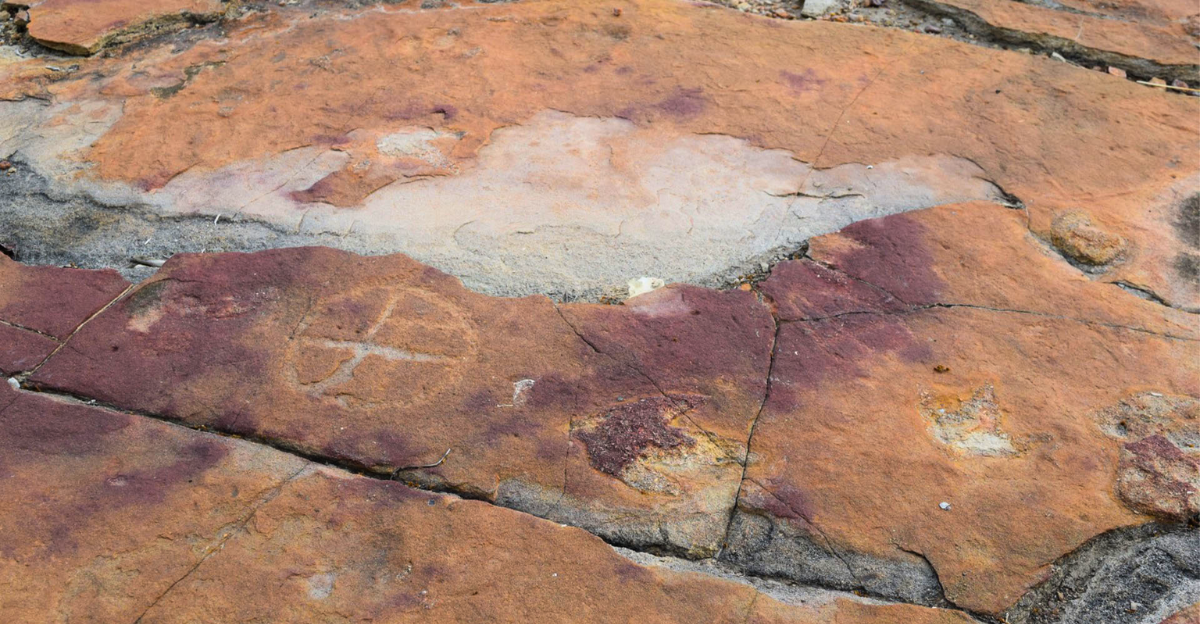
Imagine yourself standing on the dry, hot plains of Brazil, where history lies beneath your feet. At Serrote do Letreiro, man carvings from 9,000 years ago are inches from dinosaur footprints from 66 million years ago. It’s as if two worlds are colliding—one from the time of the dinosaurs and one from early man.
This quaint and beautiful country makes us wonder: Did the old people gaze upon these enormous footprints and create tales to explain them? Their paintings on rocks appear to communicate to us across the centuries and show us how they struggled to comprehend mysteries left behind in stone.
The Discovery of Aerial Drones and Ancient Mysteries

Although the dinosaur footprints found in Brazil’s Sousa Basin date back to the early 20th century, it wasn’t until the help of drone technology that researchers recently revealed the breathtaking proximity of rock paintings to these ancient footprints.
In 2023, Leonardo Troiano, accompanied by students from the region, led archaeologist-led excavations that documented dozens of petroglyphs merely two to four inches from the fossilized prints. This technical innovation not only revealed new carvings; it redefined the site as a singular coming together of paleontology and archaeology, in which human ingenuity left an indelible mark along with the fossils of extinct giants.
A Deliberate Placement-Symbolic or Scientific?
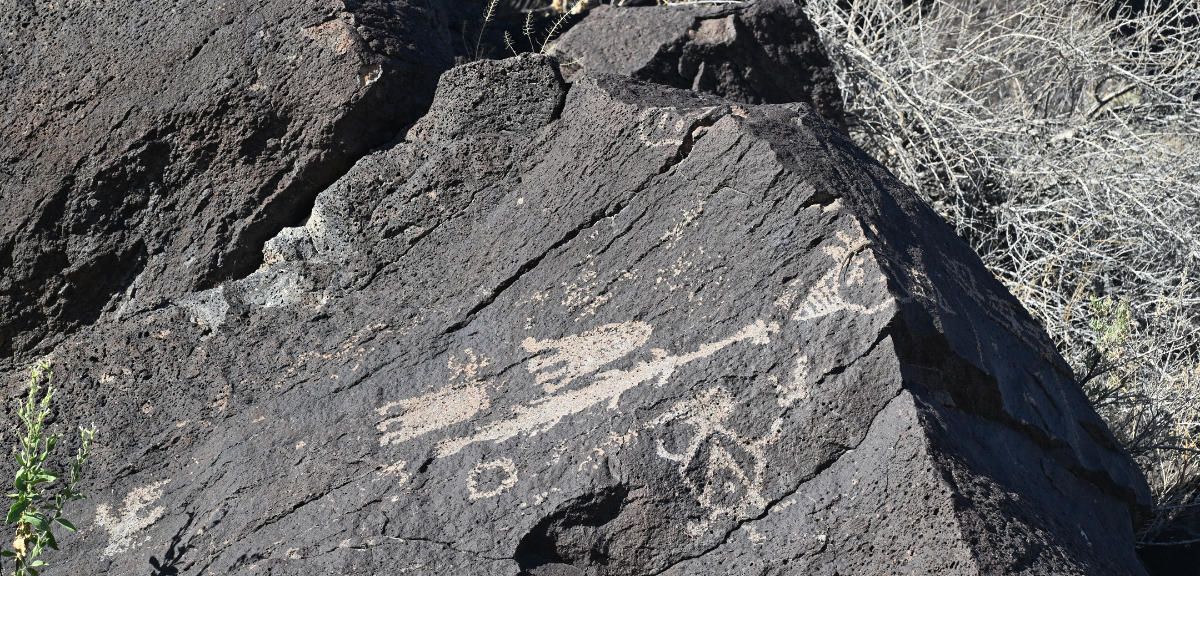
The petroglyphs at Serrote do Letreiro were not randomly scattered. Researchers found that ancient people carefully placed their carvings near the dinosaur footprints, even mimicking the shape of the prints here and there. There are no superimposed petroglyphs disfiguring the footprints, and this suggests reverent respect—perhaps even worship—of these ancient prints.
The act of careful placement suggests symbolic rapport: Did these footprints ignite myth, ritual, or proto-scientific investigation? The record indicates ancient humans acknowledged the tracks as remarkable, even though they were unaware of their actual source. Clearly, these footprints sparked curiosity, wonder, and deep cultural significance.
What Did Ancient Artists Think They Found?
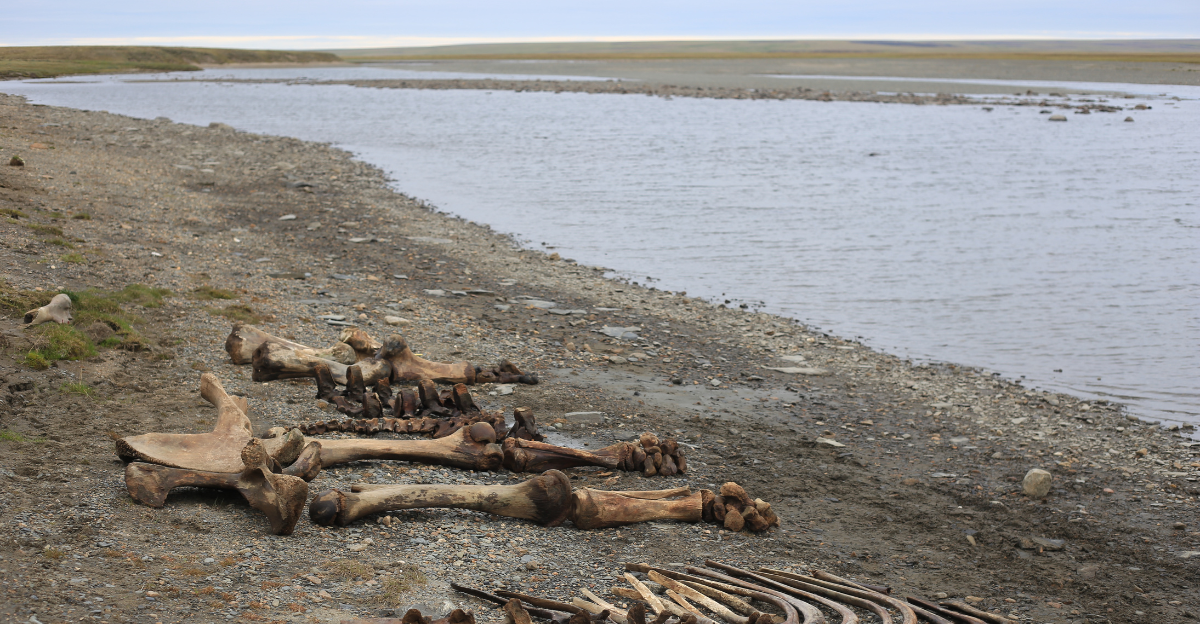
While it’s tempting to imagine these early Brazilians as proto-paleontologists, the situation is not so straightforward. The artists who created the rock paintings were likely not aware of dinosaurs as we know them today. Some scientists speculate that they may have attributed the tracks to giant birds like rheas or even extinct megafauna like mastodons. Others speculate the footprints could have spawned myths regarding supernatural creatures or spirits of ancestors.
This mirrors the way other civilizations understood fossils: Siberian natives pictured mammoth bones as belonging to giant burrowing creatures, while ancient Greeks envisioned cyclops within elephant skulls.
A Global Phenomenon Uniquely Close in Brazil
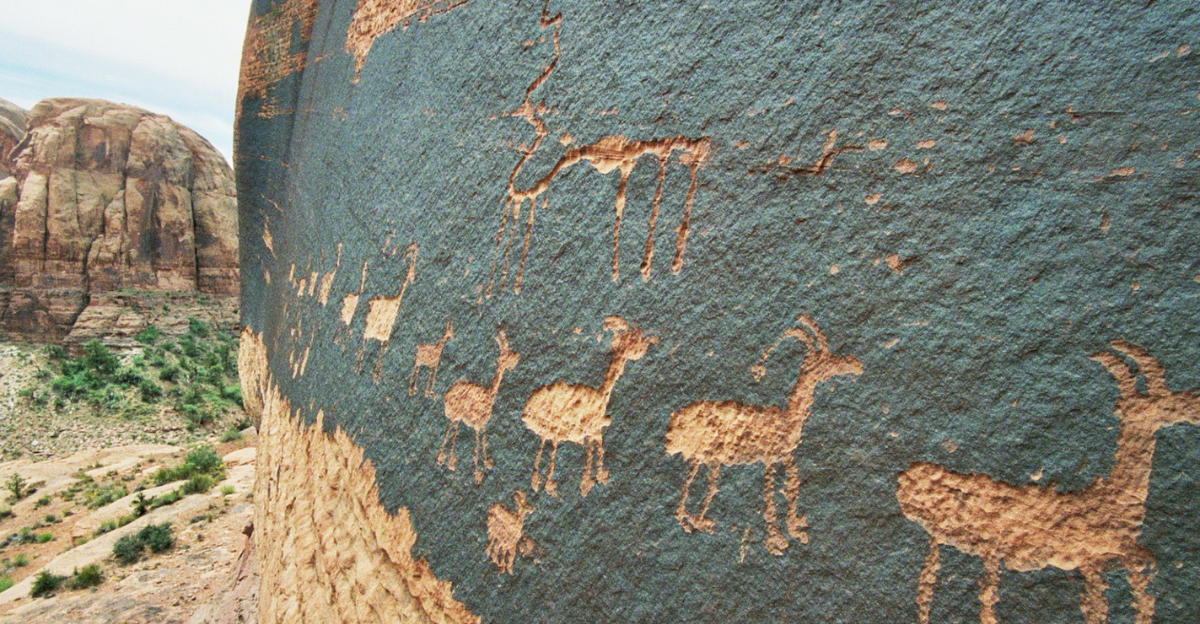
People made rock paintings together with dinosaur prints in other parts of Poland, Australia, and the Poison Spider Dinosaur Tracks in Utah. Still, none of them overlap as closely as in Serrote do Letreiro. The connection is not as specific or perhaps even accidental, lacking the desired course that one obtains in Brazil.
At Serrote do Letreiro, the engravers’ intention was clear and dramatic: they acknowledged the ancient tracks for what they were—something extraordinary. They decided to make their art in open conversation with them, forging a symbolic connection between the human imagination and the fossil record that still speaks to us today.
The Artists
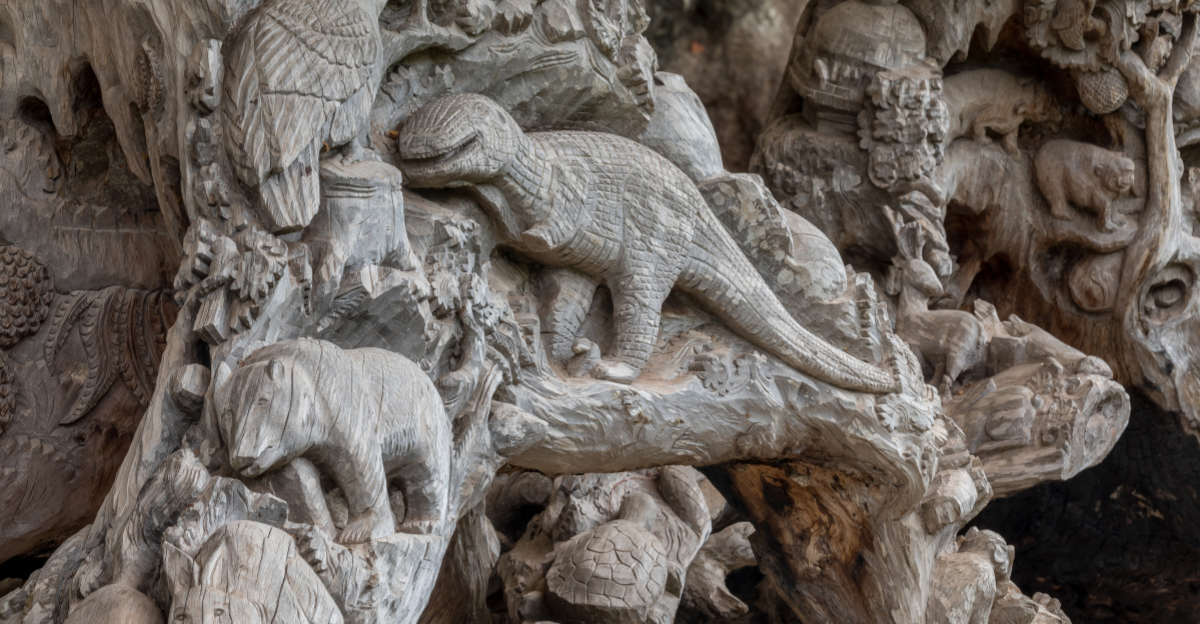
Long ago, seminomadic hunters and gatherers did more than leave a record of their lives—they left compelling art. In a fantastic find, 9,000-year-old carvings are inches from dinosaur footprints. These early humans, migrating with the seasons and making a living on the land, paused long enough to carve pictures into stone alongside the trails of the ancient giants.
Their craftsmanship shows curiosity, wonder, and even possibly spirituality. This close bond between human imagination and fossil tracks is a compelling story. It’s a moment when human fantasy clashed with ancient times, blending survival, legend, and sense into the same ground they both walked.
Art, Science, or Mythmaking?
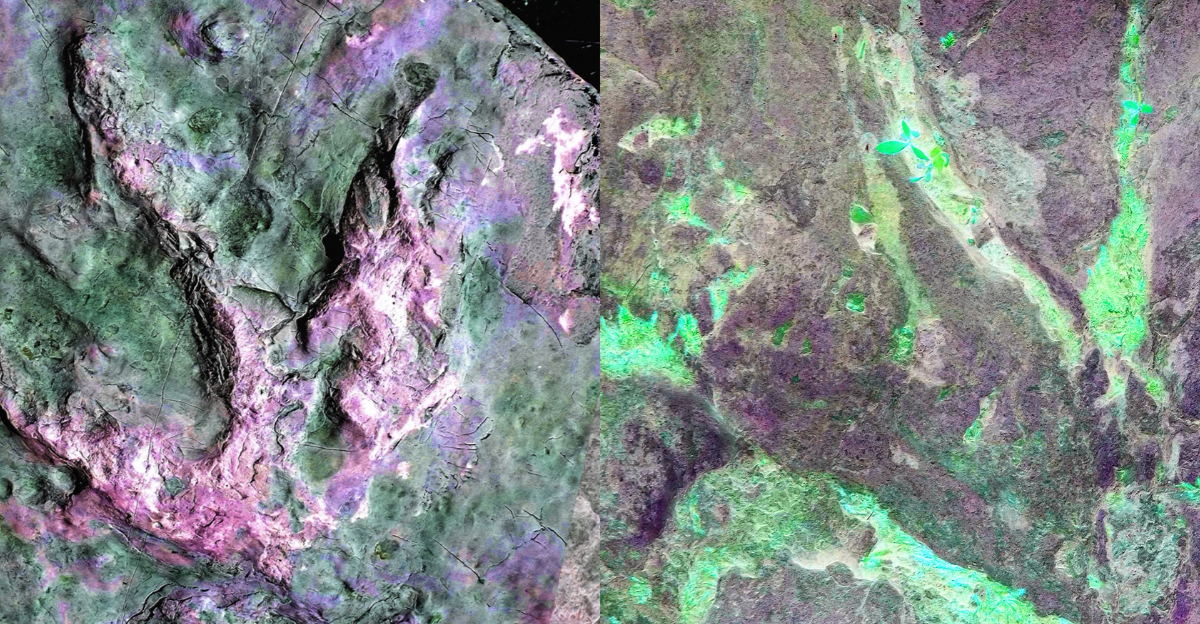
This special site fuses science, art, and myth. The carvings look very much like the dinosaur footprints that border them, demonstrating that the early dwellers were trying to understand what they were seeing. Maybe they thought that the tracks were created by gods, monsters, or spirits of their forefathers.
The patterns and shapes they carved may be a means of respecting or attempting to explain the footprints, much like subsequent cultures did with fossils. This site demonstrates how man has always used both thought and imagination to describe the unknown. It reminds us of a period when mystery and belief went hand in hand.
The Dinosaur Footprints
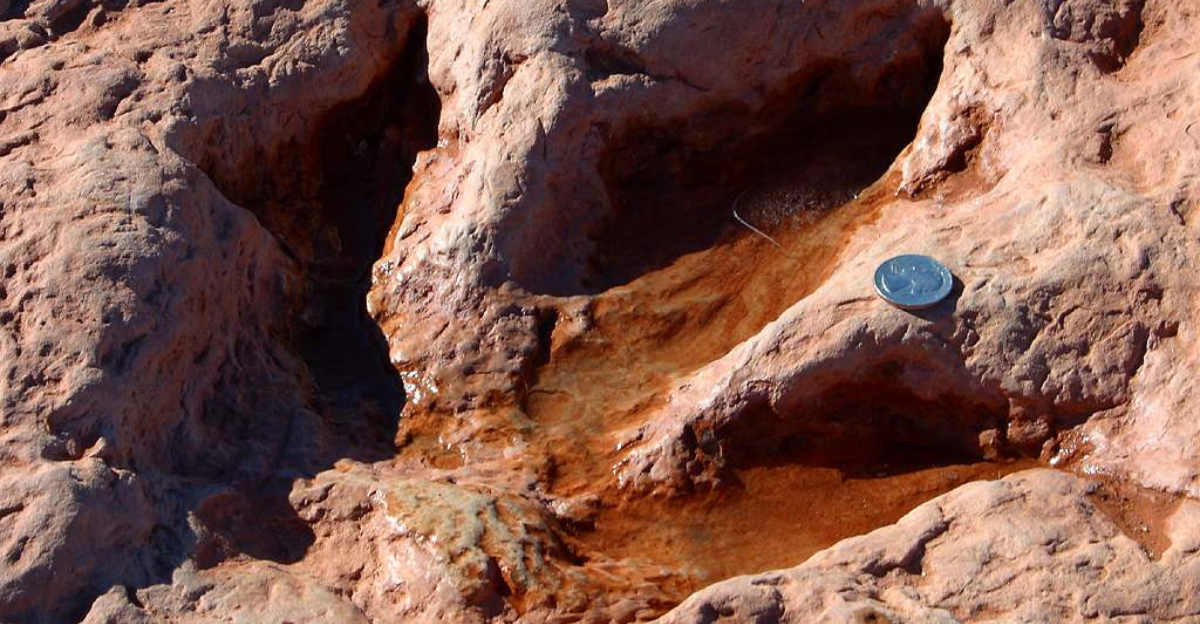
This site resists separating science, art, and myth. The encounter with the dinosaur tracks suggests proto-scientific curiosity, yet invites myth-making. Were such early humans viewing the tracks as evidence for gods, monsters, or spirits of ancestors? Are the geometric markings attempts at explication or devotion to the tracks, as would happen later for fossils?
The site is a tribute to the enduring human desire to clarify the mysterious by observation and imagination. It reminds us of an era when mystery stimulated creativity, when wonder produced meaning, and the divide between the known and the believed was blurred, sacred, lovely, and evocative.
Separating Fact from Fiction
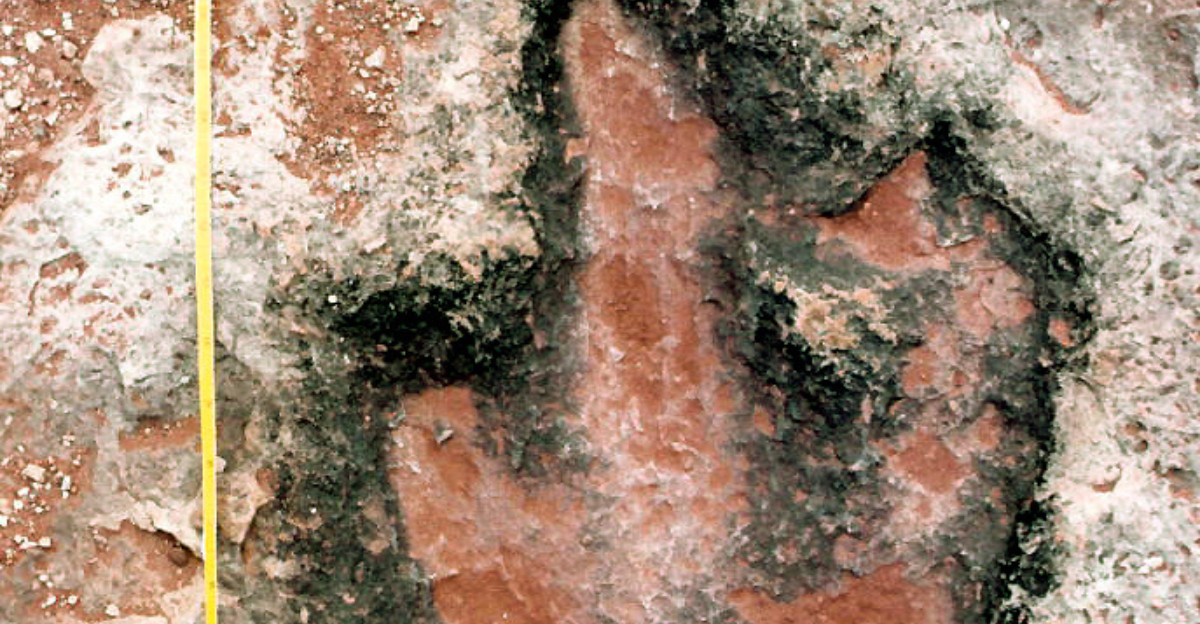
The Brazilian find stands in open contrast to controversial claims elsewhere, like the Paluxy River of Texas or Turkmenistan, where purported human and dinosaur footprints have been widely discredited as hoaxes or misread natural impressions.
In Serrote do Letreiro, however, the evidence is real and substantial. Early humans didn’t walk alongside dinosaurs—elsewhere, much later, they found fossilized footprints left millions of years ago. This truthful timeline makes the site completely one-of-a-kind. It’s not proof of coexistence but a beautiful link between distant eras. It shows humans as observers of ancient times, not actors in them.
Key Takeaways
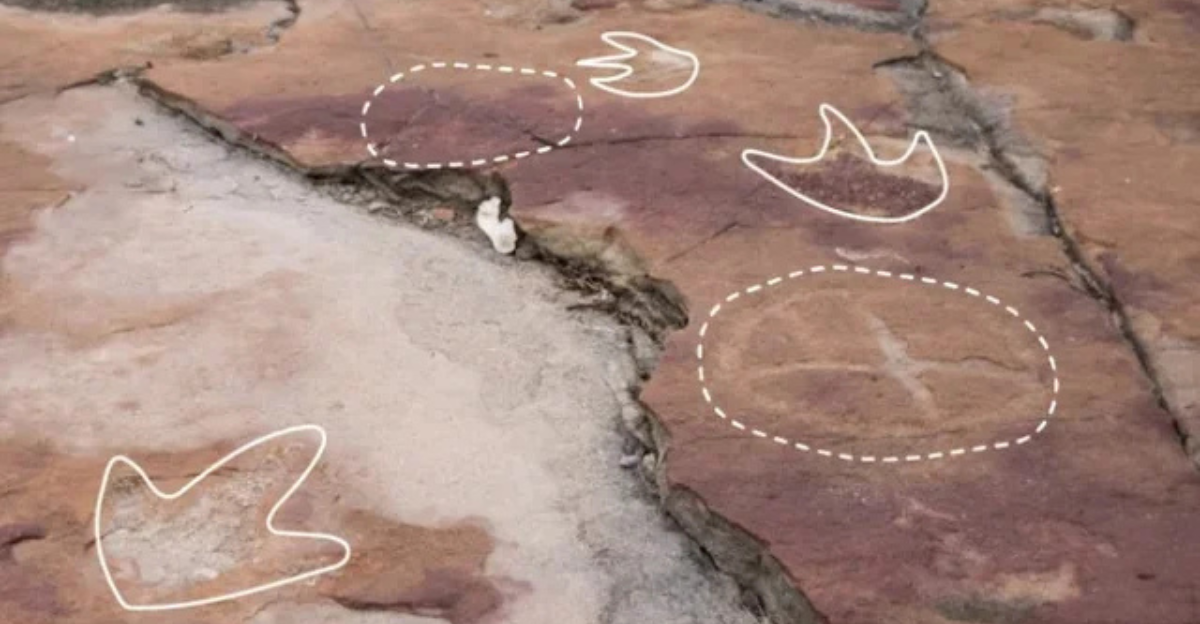
The 9,000-year-old rock paintings with dinosaur prints at Serrote do Letreiro are not only an archaeological oddity. But they are also a sobering reminder of our species’ tendency to impose meaning on the world. Here, our ancient forebears engaged with the fossil record, initiating a visual conversation that stretches back millions of years.
Their engravings invite us to think about how we, too, interpret the signatures of the past, bringing observation, imagination, and meaning together. As science continues to uncover such intersections, we’re reminded that curiosity—and the urge to leave our mark—unite us across the ages.
Explore more of our trending stories and hit Follow to keep them coming to your feed!

Don’t miss out on more stories like this! Hit the Follow button at the top of this article to stay updated with the latest news. Share your thoughts in the comments—we’d love to hear from you!







